Last updated on February 13th, 2022
Our site is reader supported, this means we may earn a small commission from Amazon and other affiliates when you buy through links on our site.
Step by Step Tree Care & Maintainance Guide
There are endless benefits to planting trees in the garden. However, trees demand regular maintenance and nurturing to thrive. An unhealthy tree not only affects the curb appeal of your home but may also burn a hole in your pocket.
If you are planning on adding some greenery to your garden whether it’s making a hedge, screening off or just planting a beautiful tree, you must make sure you are selecting the right trees and are aware of the basic care and maintenance to ensure that your trees grow to their full potential.
This post shares our top 7 tree care and maintenance tips that every tree owner should know.
Selecting the right tree
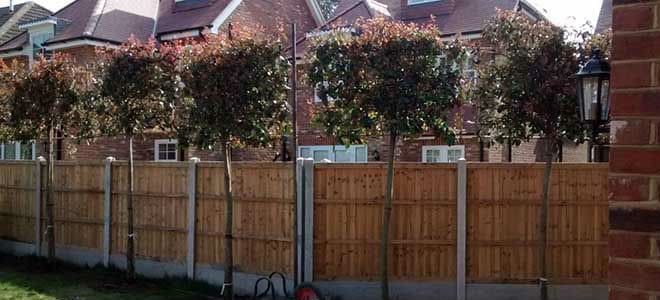
Trees are for a lifetime, so spending the time to choose the right one and the right place is worth the appeal it adds to your garden. Find the purpose of planting a new tree, like improving the aesthetics, privacy, reduction of energy consumption, or shade for summer.
If your garden is close to the utility lines of other buildings, it is better to choose short trees as they won’t clash with the overhead electricity lines. Long trees tend to clash with the electricity lines and other buildings. Choose the tall trees only, if your home is isolated from other buildings, utility lines or want shade a neighbours garden as this can also cause future problems and arguments.
It is necessary to plant a tree in the right place for its safety and maintenance. You can plant the large and lengthy trees on the south and west end of your house to get a cooling shade in summer. On the other hand, the short evergreen trees can be planted on the north end to block the chilly winds during winters.
Planting a tree
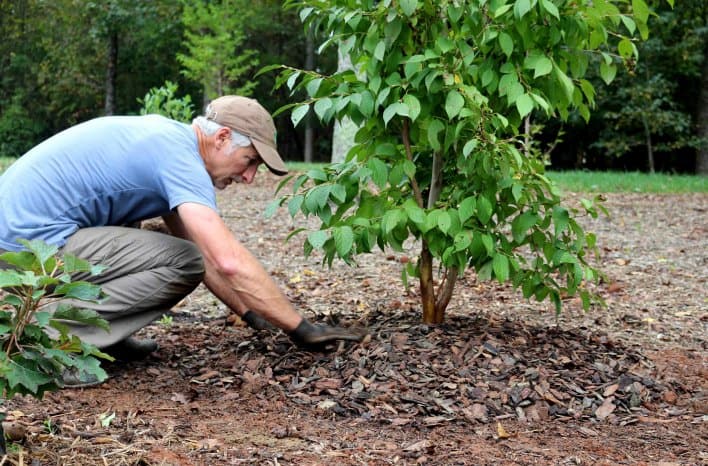
Image credit – Joegardener.com
Tree owners should know the correct way to plant a new tree. Digging a large hole for a new tree is the key to its fast and healthy growth. The gardener needs to place the root ball carefully into the hole to keep it intact.
In the case of a burlapped root, it is necessary to cut the twine accurately and remove the burlap. It is essential to plant small trees at a minimum distance of 10 feet from the foundation of your home and the electricity lines. While the bigger trees must be planted at least 15 to 20 feet away from the foundation and utility lines.
When planting never plants any deeper than it had been previously planted which is easy to see from the stem by looking at it carefully. Mix some good quality, well-rotted compost into the hole when plants and around the roots to give it the best possible start. Finally water well after planting. In the UK, trees purchased in November to March are usually bare root or root balled as this is when they are dormant for the winter and can be safely lifted from the ground and replanted. Trees purchased in April to October are usually potted trees in large pots. Ideally, trees should be planted when dormant but you can have as much success planting potted trees in summer when it may be more practical for some. Just remember to keep them well watered as they can only get water from the root ball until they establish.
Importance of Mulching
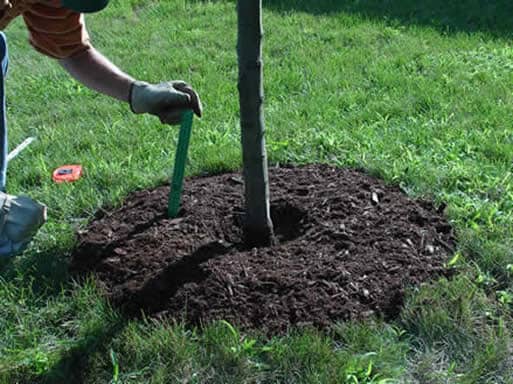
Mulch is the best friend of every newly planted tree. It is essential to mulch a new tree as soon as you plant it in your garden. The mulch provides an insulation layer which protects the roots of a tree from heat and cold temperatures. It also retains the water to maintain moisture in the soil around the roots. Mulch also prevents the soil compaction and growth of weeds around the tree.
Before adding the mulch, it is essential to remove any weeds or grass within 3 to 10 feet area around your tree. Use the natural mulch made of bark pieces and wooden chips 2 to 4 inches deep in the circular area.
Watering the trees
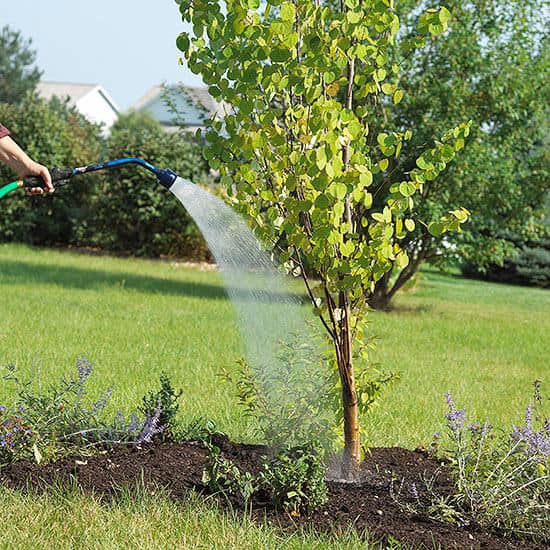
Image credit – whitehouselandscaping.com
Watering is a vital part of tree care and maintenance routine. The amount of water a tree needs for growth depends on the climatic conditions of the area. It is essential to water the new trees as soon as you plant them in your garden.
A new tree spends a lot of energy to establish its roots in the soil during the first few years of its growth. It faces a hard time in the summer season due to lack of rain and warmer weather. Tree owners need to water them deeply and cover the surrounding area with mulch for protection of roots from drying out.
Deep watering and mulch protects the roots and keeps them moist which speeds up the establishment of roots. However, too much watering is harmful to the trees as overly moist soil prevents the oxygen from reaching the roots.
Winter maintenance
Winter is usually a harsh season for all the plants and trees. People living in the low-temperature areas such as Scotland, which experience heavy snowfall need to take special care of their trees in winter. Mulching is helpful as it insulates the roots of the tree form the cold air in the winter. Some landscape professionals recommend using the de-icing products for melting of ice on the trees. However, they should be used by the professionals as the salts present in them can harm your trees, if used in excess.
Pruning of trees
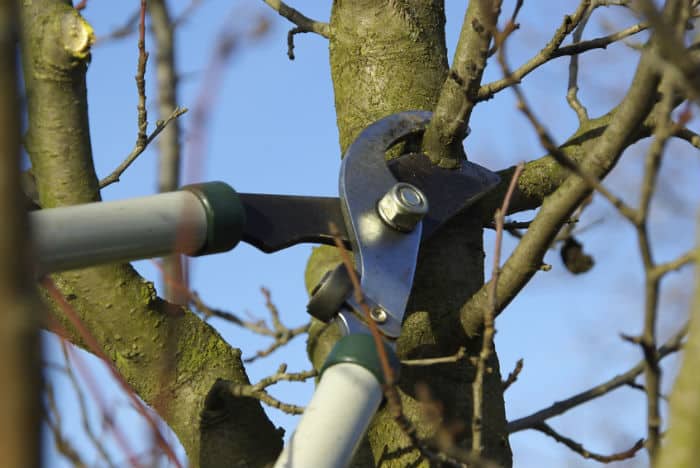
Image credit – hometowngardener.com
All the trees pruning at the right time. You can quickly do a light pruning and remove the dead wood for a small tree, however; for a mature tree, it is necessary to get the pruning done by a professional.
The best time for pruning during the winter season is to do it after the coldest part of the season has passed. In the summer season, pruning should be done after the completion of seasonal growth as early pruning may slow down the growth.
Pruning slows the growth of a tree as the amount of food made by the leaves is reduced. You should never prune the trees in the months of fall, as the fungus starts spreading their pores in the fall, which may damage or slow down the healing of cuts.
Pests and Diseases
Saving the trees from pests and diseases is essential. Even if you take proper care of your trees, pests and diseases can waste your efforts. For the protection of your trees, it is necessary to monitor the trees regularly for any possible signs of pests and diseases.
The tree owners are not aware of the early signs and symptoms. Therefore, it is better to contact a professional arborist to identify any possible signs of disease. An arborist helps you to determine the pests or early signs of infection and can advise you the right solution.
Final Words
The points mentioned in this post are the top tips for tree care and maintenance. However, tree owners need to take some additional care of their trees. Proper watering, manuring, pruning, addressing the pests, diseases and getting help from landscape professionals can help the tree owners to maintain their trees effectively.
Author Bio
Stephen Charles is a renowned blogger, passionate to share amazing and helpful information with people in multiple niches. He loves to share his experiences with gardening, healthcare, news, technology, and sports enthusiasts from around the world.


